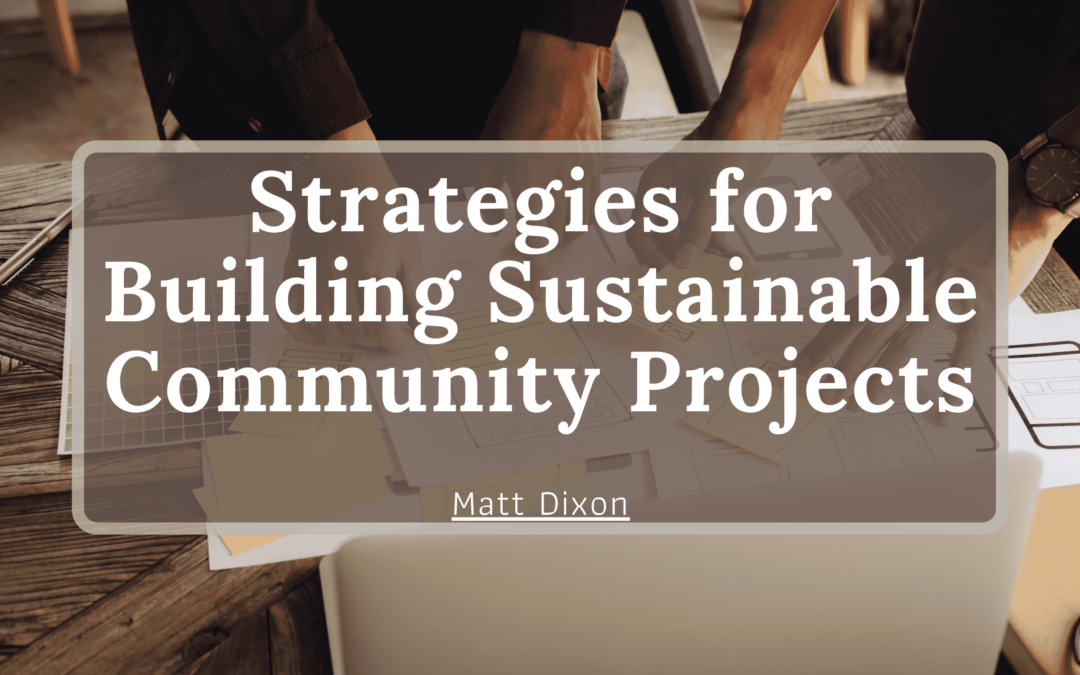In today’s world, community projects are essential for fostering local development, addressing social issues, and promoting sustainability. However, ensuring the longevity and effectiveness of these projects requires careful planning and implementation. Here are some strategies for building sustainable community projects:
1. Community Engagement and Participation
One of the most critical aspects of building sustainable community projects is ensuring active engagement and participation from the community members themselves. By involving stakeholders in the planning, decision-making, and implementation processes, projects are more likely to address genuine needs and garner local support. Community engagement also fosters a sense of ownership, leading to greater commitment and sustainability over time.
2. Needs Assessment and Asset Mapping
Before initiating any community project, conducting a thorough needs assessment and asset mapping is crucial. Understanding the specific needs, challenges, and strengths of the community enables project planners to tailor interventions effectively. Asset mapping helps identify existing resources, talents, and capacities within the community that can be leveraged to support project goals, thereby maximizing impact and sustainability.
3. Collaboration and Partnership Building
Sustainable community projects often require collaboration and partnerships with stakeholders, including local government agencies, non-profit organizations, businesses, and educational institutions. By pooling resources, expertise, and networks, projects can benefit from diverse perspectives and capabilities, leading to more comprehensive and sustainable solutions. Collaborative efforts also enhance community buy-in and promote shared responsibility for project success.
4. Capacity Building and Empowerment
Investing in capacity-building and empowerment initiatives is essential for ensuring the long-term sustainability of community projects. Providing training, skill development, and educational opportunities equips community members with the tools and knowledge to participate in project activities and actively take on leadership roles. Empowering individuals and groups within the community fosters resilience, self-reliance, and sustainable development outcomes.
5. Adaptive Management and Continuous Learning
Sustainable community projects require flexibility and adaptability to respond to evolving needs, circumstances, and feedback. Adopting an adaptive management approach involves regularly monitoring and evaluating project progress, identifying lessons learned, and making necessary adjustments to improve effectiveness and sustainability. Embracing a culture of continuous learning enables project stakeholders to iterate and innovate, ensuring that interventions remain relevant and impactful over time.
6. Sustainable Financing Mechanisms
Securing sustainable financing mechanisms is essential for the longevity of community projects. While initial funding may come from grants, donations, or government subsidies, identifying revenue streams and income-generating activities can help projects become self-sustaining in the long run. Examples of sustainable financing mechanisms include social enterprises, fee-for-service models, and partnerships with businesses or investors interested in social impact.
Building sustainable community projects requires a holistic approach that prioritizes community engagement, collaboration, capacity building, and adaptive management. By involving stakeholders, assessing needs, fostering partnerships, empowering communities, and ensuring sustainable financing, projects can achieve lasting impact and contribute to positive social change. Ultimately, the success of community projects hinges on their ability to address local needs, build resilience, and foster inclusive and sustainable development for all.

